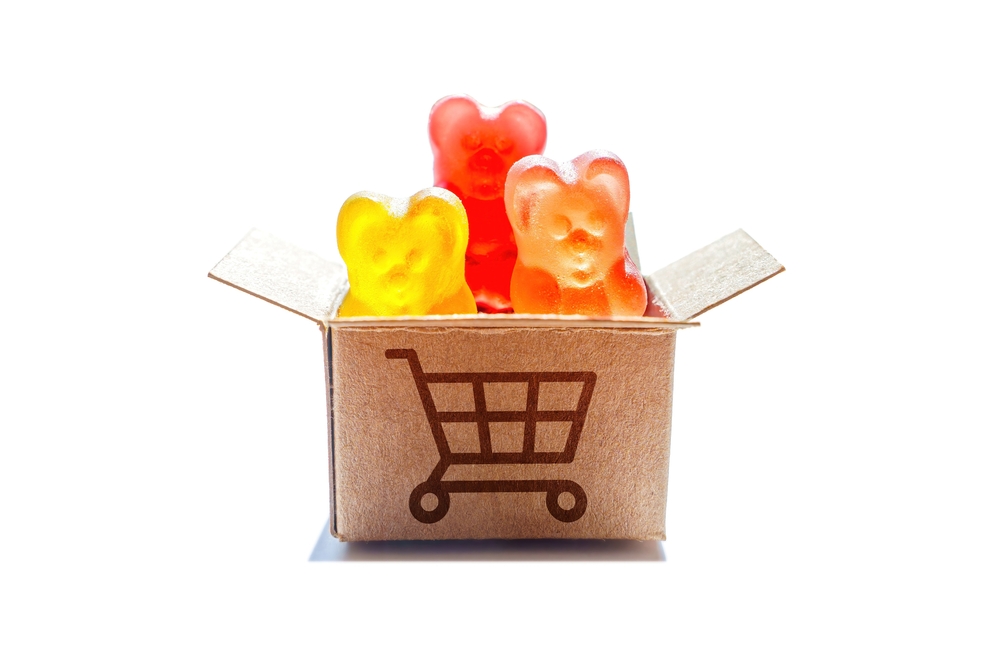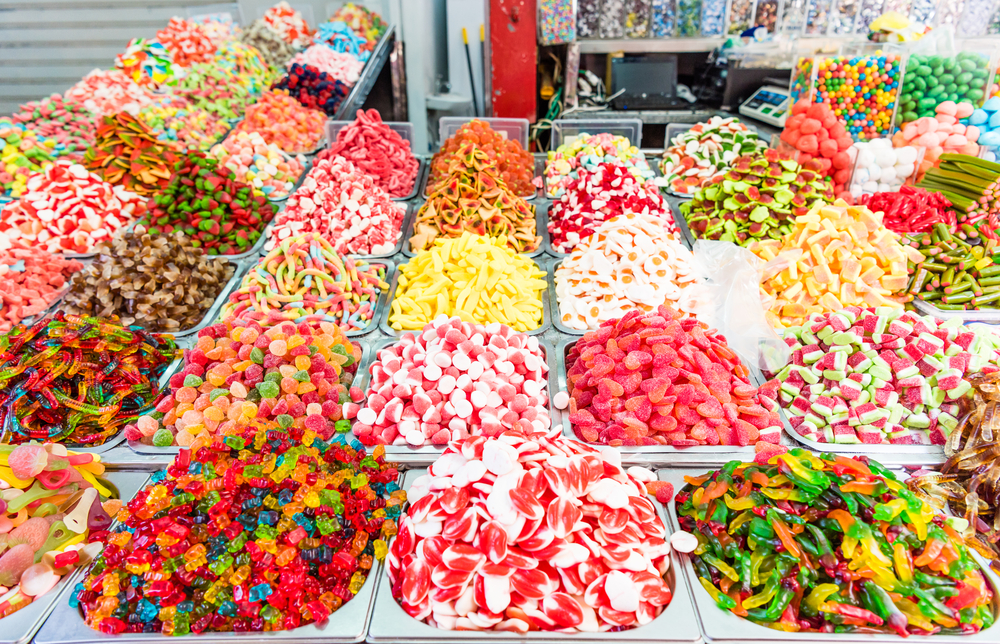The Best Guide To I Luv Candi
The Best Guide To I Luv Candi
Blog Article
The Best Strategy To Use For I Luv Candi
Table of ContentsThe smart Trick of I Luv Candi That Nobody is Talking AboutI Luv Candi - An OverviewUnknown Facts About I Luv CandiIndicators on I Luv Candi You Should Know10 Easy Facts About I Luv Candi Described
We have actually prepared a great deal of business plans for this kind of job. Right here are the usual customer segments. Client Section Summary Preferences Just How to Discover Them Kids Youthful consumers aged 4-12 Colorful sweets, gummy bears, lollipops Partner with regional schools, host kid-friendly events Teens Teenagers aged 13-19 Sour sweets, uniqueness things, stylish deals with Engage on social media, collaborate with influencers Parents Grownups with little ones Organic and much healthier options, sentimental sweets Deal family-friendly promos, advertise in parenting publications Trainees University and college trainees Energy-boosting sweets, budget friendly snacks Companion with nearby schools, promote during test durations Gift Buyers People looking for presents Premium chocolates, present baskets Develop appealing screens, use adjustable gift options In examining the financial dynamics within our sweet-shop, we've discovered that clients usually invest.Monitorings show that a typical consumer frequents the store. Specific durations, such as vacations and unique events, see a surge in repeat gos to, whereas, during off-season months, the regularity might diminish. da bomb. Calculating the lifetime value of a typical consumer at the sweet-shop, we approximate it to be
With these aspects in consideration, we can deduce that the ordinary profits per consumer, over the program of a year, hovers. The most lucrative customers for a candy store are commonly households with young youngsters.
This demographic often tends to make frequent purchases, raising the shop's income. To target and attract them, the sweet shop can utilize vivid and playful advertising and marketing strategies, such as dynamic display screens, appealing promotions, and perhaps even holding kid-friendly events or workshops. Developing a welcoming and family-friendly ambience within the shop can additionally enhance the general experience.
Our I Luv Candi Ideas
You can additionally approximate your very own revenue by applying different assumptions with our economic prepare for a candy shop. Typical monthly revenue: $2,000 This kind of sweet-shop is usually a tiny, family-run business, perhaps recognized to residents but not attracting large numbers of visitors or passersby. The store could offer a choice of typical sweets and a couple of homemade deals with.
The store doesn't normally lug rare or pricey things, focusing instead on cost effective deals with in order to maintain routine sales. Assuming an ordinary investing of $5 per consumer and around 400 customers per month, the month-to-month revenue for this sweet-shop would be about. Average regular monthly revenue: $20,000 This sweet-shop take advantage of its calculated location in an active city area, attracting a large number of customers looking for pleasant extravagances as they shop.
Along with its diverse sweet option, this store might likewise offer relevant products like gift baskets, sweet bouquets, and novelty things, supplying numerous earnings streams - lolly shop maroochydore. The shop's location calls for a greater allocate lease and staffing however brings about higher sales volume. With an estimated average spending of $10 per client and about 2,000 customers each month, this store can produce
Getting The I Luv Candi To Work
Situated in a major city and tourist location, it's a huge establishment, typically topped multiple floors and perhaps part of a nationwide or international chain. The store uses an enormous variety of candies, including unique and limited-edition items, and goods like branded apparel and accessories. It's not simply a store; it's a destination.
These attractions assist to draw countless site visitors, substantially boosting prospective sales. The operational costs for this type of shop are significant due to the area, dimension, team, and features supplied. The high foot website traffic and ordinary spending can lead to significant profits. Assuming an ordinary purchase of $20 per client and around 2,500 customers per month, this flagship store might attain.
Classification Examples of Expenses Average Month-to-month Cost (Range in $) Tips to Reduce Expenses Rent and Utilities Shop lease, electrical here energy, water, gas $1,500 - $3,500 Take into consideration a smaller place, discuss rental fee, and use energy-efficient illumination and devices. Inventory Candy, treats, product packaging materials $2,000 - $5,000 Optimize stock monitoring to lower waste and track prominent things to stay clear of overstocking.
Advertising And Marketing Printed materials, online ads, promotions $500 - $1,500 Emphasis on economical digital advertising and utilize social media platforms free of charge promotion. chocolate shop sunshine coast. Insurance coverage Business responsibility insurance coverage $100 - $300 Store around for affordable insurance prices and think about bundling policies. Devices and Maintenance Sales register, display racks, repair services $200 - $600 Buy previously owned tools when possible and carry out normal maintenance to extend tools lifespan
The Buzz on I Luv Candi
Charge Card Handling Fees Charges for refining card payments $100 - $300 Negotiate reduced handling fees with repayment processors or explore flat-rate alternatives. Miscellaneous Workplace materials, cleansing materials $100 - $300 Buy wholesale and search for price cuts on materials. A sweet-shop ends up being rewarding when its total profits exceeds its complete set prices.

A large, well-located sweet-shop would certainly have a greater breakeven factor than a little store that does not need much profits to cover their costs. Interested regarding the earnings of your sweet-shop? Try our easy to use financial strategy crafted for sweet-shop. Simply input your own assumptions, and it will help you determine the amount you require to earn in order to run a profitable service.
Not known Details About I Luv Candi

Finally, financial downturns that minimize consumer spending can influence sweet-shop sales and productivity, making it important for sweet-shop to manage their expenditures and adjust to altering market problems to stay profitable. These dangers are commonly included in the SWOT analysis for a candy shop. Gross margins and net margins are key signs made use of to evaluate the success of a sweet-shop company.
Essentially, it's the earnings remaining after subtracting prices directly pertaining to the candy supply, such as acquisition prices from providers, production expenses (if the sweets are homemade), and personnel wages for those associated with production or sales. Web margin, conversely, consider all the expenditures the sweet-shop sustains, including indirect costs like management expenses, marketing, rental fee, and taxes.
Sweet stores usually have a typical gross margin.For circumstances, if your candy shop earns $15,000 per month, your gross profit would be approximately 60% x $15,000 = $9,000. Take into consideration a sweet store that marketed 1,000 candy bars, with each bar valued at $2, making the complete revenue $2,000.
Report this page